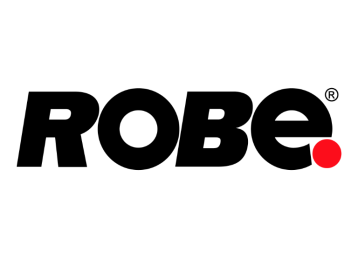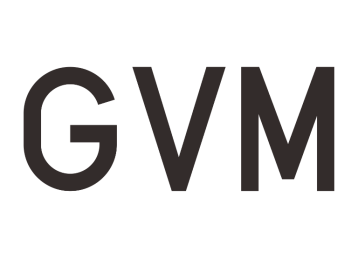By Lars Pettersson FSF
Sweden is one of the few countries where cinema and television projects are currently in production. Current shoots, however, are heavily impacted by the various measures necessary to make working conditions safe for all concerned. At the end of March when the Covid-19 pandemic was in its most rampant stage in Europe, there were almost no Swedish shoots up and running, but then slowly this started to change.
The Viaplay TV series ”Lyckoviken” was greenlit to start principal photography in the middle of April. Nicklas Karpaty FSF was one of two Directors of Photography hired to lens this show and he was kind enough to agree to be interviewed during a short break towards the end of production.
L.P: ”With almost the whole world in Lockdown during the worst phase of the Covid-19 outbreak, your production still chose to go ahead and to start shooting?”
N.K: ”Yes, ’Lyckoviken’ was one of very few projects that went into production in Sweden during the middle of April -we may even have been one of the first projects to start shooting in Europe at that time. I know for a fact that the decision to greenlight the show was taken at the highest corporate level by the studio, and also that Sweden’s stance as more liberal in terms of Lockdown than most other alternative countries, also played a role in letting us go ahead.
All of us who signed on were asked to go into a voluntary two-week quarantine before the shoot started. We also had a special ”Corona-coordinator” on set at all times, and we were given a set of guidelines to adhere to, by the Swedish National Ministry of Health. As a few examples, everyone used face protection, cleaning spirits for hand hygiene was available everywhere, everyone constantly kept at a certain physical distance from everybody else and last but not least cast and crew were kept at an absolute minimum during takes. Additionally, actors were not allowed to touch things like props or doors unnecessarily during the filming. Also, if any member of the team felt even slight flu-like symptoms, they were urged to stay at home, and the production would either hire a temporary substitute in the case of a crew member, or re-work the schedule, in the case of an actor”.
 Nicklas Karpaty FSF (left) was one of two Directors of Photography on the show, flanked here by Michael Kaare Petersen FSF who operated the B camera. Note how all basic lighting comes in through the windows. Also, to heighten the sense of realism, all the studio sets had proper ceilings.
Nicklas Karpaty FSF (left) was one of two Directors of Photography on the show, flanked here by Michael Kaare Petersen FSF who operated the B camera. Note how all basic lighting comes in through the windows. Also, to heighten the sense of realism, all the studio sets had proper ceilings.L.P: ”Could you tell us some more about the project?”
N.K: ”From my point of view, this is a highly unusual production, initiated by the highly successful Swedish “Scandinavian Noir” thriller novelist Camilla Läckberg together with Kristoffer Graci who is the CEO of Nordisk Film TV AB. Camilla Läckberg has admitted that she’s quite fond of ‘soap operas’, and she wanted to do a modern version of this or, slightly differently put, a ’drama light’. Compared to what I’m used to, this has meant a very large amount of studio work -about 70%- and the rest of the show has been shot on location. We’re using two complete teams, so there are basically four cameras running at all times on this show”.
L.P: ”Nicklas, how did you prepare yourself artistically for this project, which were your sources of inspiration?”
N.K: ”Normally I would prepare myself way ahead of time for a production this size, and have long discussions with the director, the production designer and the showrunner, but this setup has been very different. We’ve had meetings with the directors and the creative producer, Jenny Grewdahl, during which we have discussed visual style and camera movement, but basically all this has already been decided upon ahead of time by the producers and the creative producer.
We’ve been aiming to shoot the scenes as simply as possible, with a minimum of fuss, and this has been worked out already at the script level.”
 On interiors, everyone constantly kept at a certain physical distance and cast and crew were kept at an absolute minimum during takes. Face protection was mandatory.
On interiors, everyone constantly kept at a certain physical distance and cast and crew were kept at an absolute minimum during takes. Face protection was mandatory.This series is basically about every day human relations, and we’ve opted for a warm tone where the scenes themselves are allowed to influence whether we should use a calm handheld camera or work off a tripod. My preparation has been basically all technical -like what camera and lenses to use- as well as working out the studio lighting together with gaffer Björn Dokken. Having on average 30 minutes in which to shoot every setup has been a real challenge when it comes to lighting -therefore I avoided all top light and I decided to let all basic lighting come in through the windows. To heighten the sense of realism, all the studio sets have proper ceilings. As I mentioned before, we’ve been two DoPs who have worked on this, and we each have our own camera operators and camera team.”
L.P: ”Sometimes the locations themselves can be a source of inspiration, is this something which holds true for this particular production?”
N.K: ”Unfortunately not in this case, and here we come back to the ”Soap Opera” set up which was adhered to for the whole production -the interiors were our studio sets and they were already decided on when I signed on. The key here for me has been to try to wring as much as possible out of these studio sets, from a creative point of view. The Corona restrictions also meant that -even if we found an interesting interior when we were out shooting exteriors- due to the health restrictions we were unable to use it”.

Exterior work was deemed to pose a lower risk, health-wise, but still social distancing was practiced. Since no one could enter any physical existing location during the shoot, the script had to be changed whenever it said ”he enters the building” or similar.
L.P: ”How was your collaboration with the directors, some directors have very specific requests regarding the cinematography while others will let you roam around more freely?”
N.K: ”Here also the situation has been different from what I’m used to, since our directors have made their own floorpans for every scene in advance. I’ve been able to give my input regarding these the day before the scenes are to be shot, and the directors I worked with: Åsa Kalmér, Peter Lindmark and Tea Andersson, were very receptive to my input and open to making changes as a result of that. But in general, the tempo was such that all of us needed to stick to the game plan all along -once decided upon, we followed the floorpans we had agreed upon”.
L.P: ”Did you use compositions, lighting or the location itself to enhance the psychology of the characters?”
N.K: ”Yes, when it comes to compositions I have a certain style which I’ve developed over the years, and I was able to stick to that. The lighting, as I’ve already mentioned, was already in place so my focus there was mainly about finding the direction of the key light, adjusting light levels and either add extra lights for a particular scene or use ”negative fill”.
Since Camilla Läckberg is the author behind all this, the audience would perhaps expect a certain element of crime in the plot -and they won’t be disappointed! There’s some criminal activity going on in the story, so that also gave me ample opportunity to use camera movement and lighting to enhance the atmosphere and the intrigue. In this case, I had to ”think on my feet” and quickly create something using my prior experience, since we were constantly on the go.”
LP: ”Fujifilm let the production borrow a Premista zoom for a few weeks, what are your impressions how it performed?”
N.K: ”Michael Kaare Petersen FSF was my B camera operator and he used the Premista zoom extensively. We have been using a Cooke Speed Panchro TLS-kit and an Angeniux Optimo 45-120 from day one on this show, and I felt the Premista zoom cuts very nicely with the Cooke primes. It has a warm and creamy feel to it, but at the same time it’s very sharp. There is a certain softness, a gentle quality, to it which differs from anything I’ve seen before. We were a little concerned with the size of the Premista zoom at the outset, but we loved the generous zoom range and the fast T-stop.”
We had a monitor for the script supervisor which was of the highest quality and for Corona-virus reasons this monitor was located outside the set, so I couldn’t always get out there to watch. Obviously I didn’t have the time to shoot comparative tests or anything, but just looking at that monitor, the Premista zoom felt sharper than both the Cookes and the Angénieux, and color-wise the Premista blended very nicely with the Cookes”.

Fujifilm let the production borrow a Premista zoom, seen here on the Arri Amira B camera. Karpaty and Petersen were impressed by the generous zoom range and the fast T-stop. Note how the camera is rigged for quick conversion to handheld work.
LP: ”RED Rental by MAAN Inc provided your hardware -the camera kit and lights- during this production, how was your collaboration with them?”
N.K: ”RED Rental by MAAN gave outstanding support, and they put together a camera package which was tailor-made for our needs: Alexa Mini and Amira, Cooke Speed Panchros and an Angeniux Optimo 45-120. They also provided all the lighting gear in the studio, mostly Desisti and Arri Tungsten up to 5K plus a few smaller LED units and Phillips Hue fixtures in all the practicals on set. Most of our studio sets had pre-rigged lighting, so that we could move swiftly from one set to the next”.
LP: ”Could you tell us a little bit about your own background? From where did your interest in the cinema originally come -and how did you learn the craft?”
N.K: “I began as a stills photographer, and I also worked for many years in various stills labs, doing enlargements and stuff. I studied at the Norwegian Film School in Lillehammer, Learning the craft by shooting on super-16 and 35mm film.
Almost by accident, I got to visit a film set when I was only 10 years old, and I think the feeling of enchantment which was so tangible on that set, stayed with me and played a part in my eventually winding up working with cinema myself. My bread-and-butter these days is mostly drama series, but I also shoot a lot of commercials for IKEA, Volvo etc, and I like to throw in some documentary work in between, for good measure”.





























